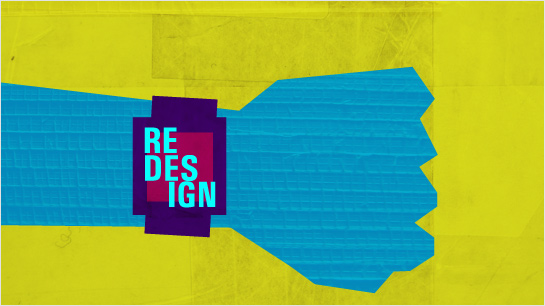
Logos and brand identity are an oft-misunderstood part of design. A logo is not a brand. A logo is not a brand identity. A logo is a crucial part of an overall brand identity, but it’s just one part of a larger toolbox that contains things like color palettes, brand platforms, photo styles, graphic patterns, positioning statements, and much, much more. This is well-traveled territory. But one thing that’s rarely discussed in logo and identity circles is timing. For clients, when is it a good time to rebrand your organization?
It depends on who you ask, but there are a lot of avenues where it makes sense to initiate a logo redesign. Many prospects and clients see identity design only as a first-stage project — to be initiated early in an organization’s life cycle — for startups and newly-minted organizations. But truly, a new identity is valuable for all seasons. If executed thoughtfully and properly, a redesign is a powerful weapon that can have maximum impact across a variety of moments during the life of your brand.
Sidestepping the issue of how to rebrand your company (conversation for another time), we’ve laid out some of the critical moments when an identity redesign can make a major difference:
In The Beginning
It’s crucial to inaugurate your company correctly at launch, and have a cohesive and strategically-designed logo in place from the beginning, so you have a consistent and appropriate story to tell. Some startups believe that well-reasoned brand strategy and design are for “later,” after rounds of funding or IPOs. But the reality is that audiences don’t care about those things — they need a consistent look and message that ties into their experience with your brand. It’s far simpler (and less expensive) to get your brand personality in order at the outset than have to retool or make course corrections soon after launch.
When Things Go South
The economy continues provide a challenging environment for many organizations, so slowing sales might be your chief concern. When faced with a loss of revenue, smart organizations see the opportunity embedded within the situation. Rather than seeing marketing and design budgets as a place to cut costs in tough times, it might be better to hit pause and reconsider — by reworking your brand’s visibility with updated design and positioning.
While your competitors are hunkering down, it’s even easier (and often cheaper) to gain the mindshare of your markets, with a lot less competitive noise. While that’s happening, it’s important to ask some honest questions: Are you still communicating to the right audiences? Have your audience’s perceptions and needs evolved? Has their awareness of your organization changed? A research-based redesign of your logo and identity can help slow the decline and reposition you for a quick rebound.
All In The Family
Sometimes brands and organizations grow in an organic way, and you find yourself introducing products or services in response to market demands and internal changes. An identity redesign can help reorganize product lines, whether it’s for an overarching organization, or for specific product suites and services. In an age where many companies have diverse interests and audiences, sometimes radically different approaches are needed under one roof. Redesigning a brand’s identity and its presence in the world can often help clarify the goals for departments or groups within your company, or on the opposite end, provide much-needed consistency that prunes back wild applications of your previous identity.
The Times They Are A-Changing
The products, services, and initiatives of your organization don’t exist in a vacuum, so it’s crucial to ensure that your messages, overall look, and an identity application can flex over time when necessary. It’s important for your brand to adapt to new competitive forces, shifting markets, or other parts of a changing landscape. With the speed of business and commerce increasing, it’s crucial that an identity is able to bend, flex, and sometimes morph. If you’re saddled with an intractable, immovable brand identity, then it’s even more important to consider a redesign or “refresh,” to gain the ability of adaptation — whether it’s to new market realities or changing trends. What is fresh today might be stale tomorrow, and yesterday’s relevancy is tomorrow’s history. The best designed identities take this into account, and provide room to grow and change.
Back to the Fusion
Companies get absorbed. Buyouts yield new products and challenges. Mergers and acquisitions are ripe with opportunities for logo and brand redesigns, but it’s important to redevelop new properties in a way that’s appropriate and authentic — true to the story your organization is already telling. Sometimes these absorbed entities are so large that their presence shifts the brand gravity of a whole company, and a redesign is vital to rethink and redistribute the visual universe you now live in.
A Shift in Focus
Whether it’s caused by a new CEO or any of the above changes, sometimes organizations just need to change. A shift in organizational thinking can have a domino effect on all the ways a company sees itself, communicates, and relates to the world. This includes a visual identity, and this very public shift can be an important, outward sign of the positive and tectonic changes within.
What’s up everyone, it’s my first pay a quick visit at this website, and piece of writing is
really fruitful in favor of me, keep up posting such articles or reviews.